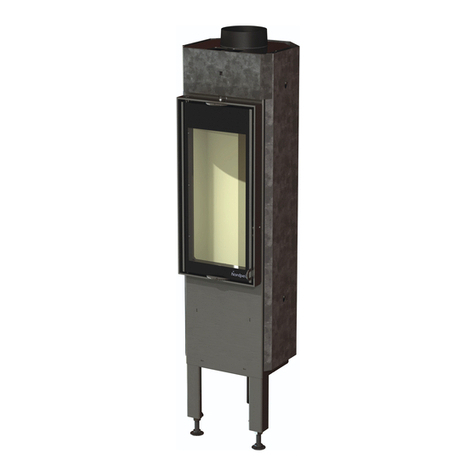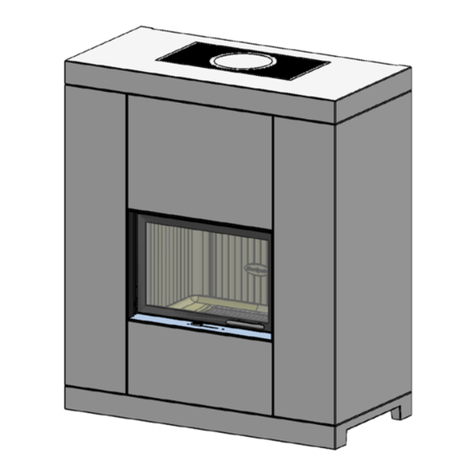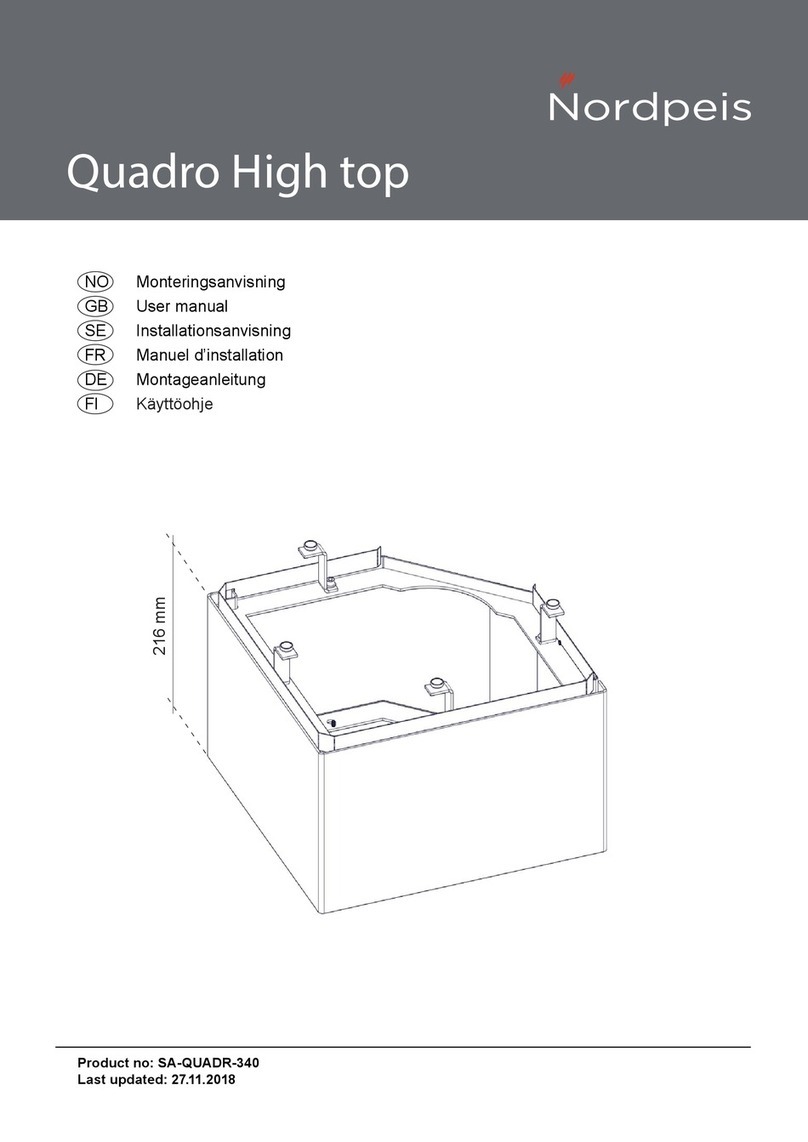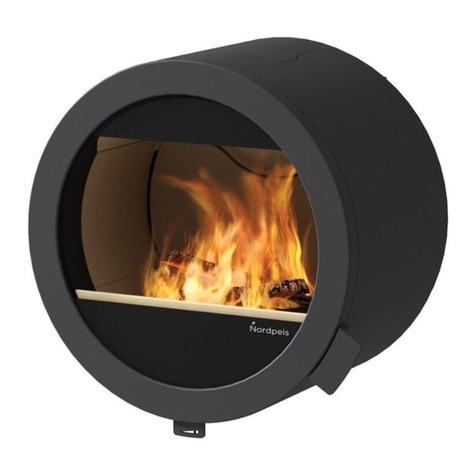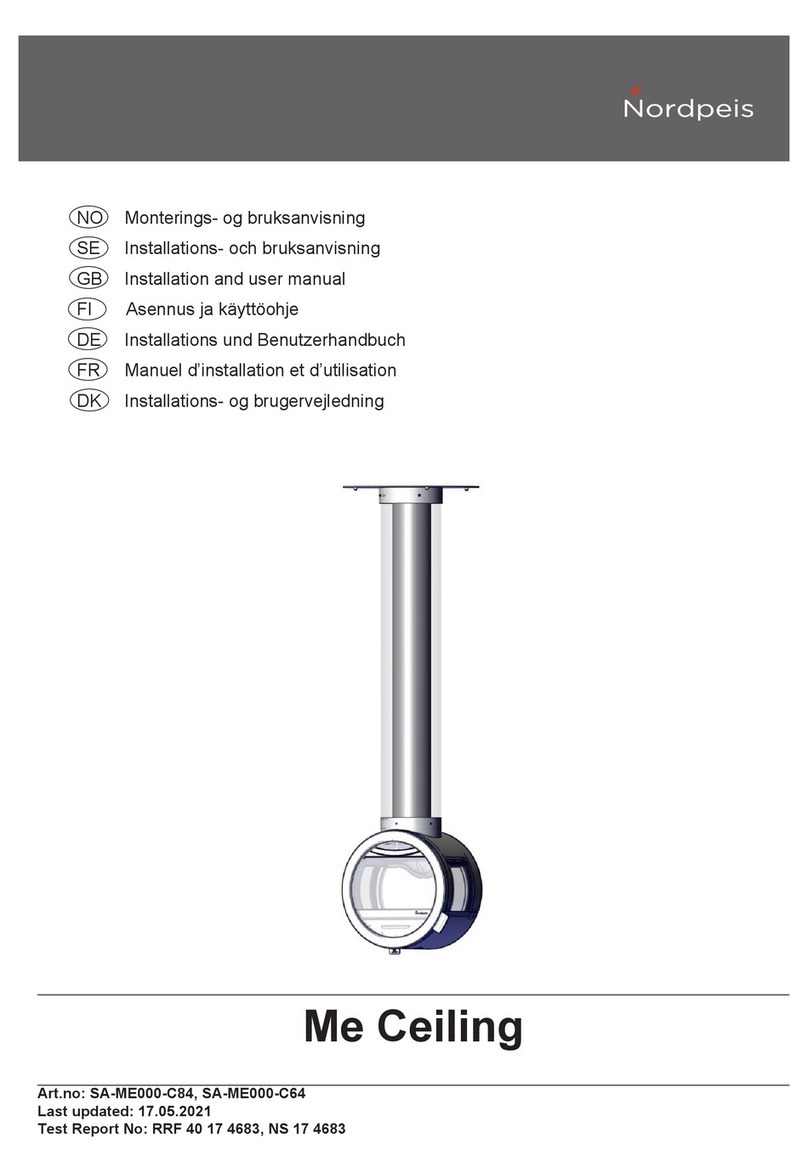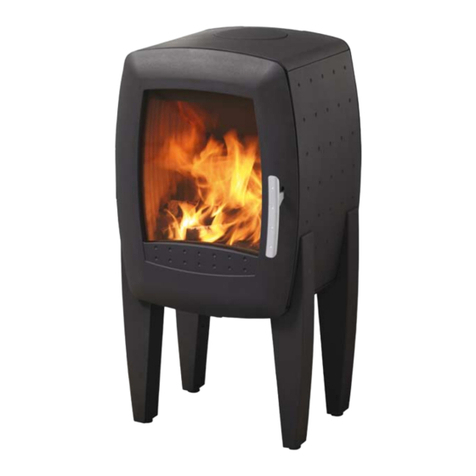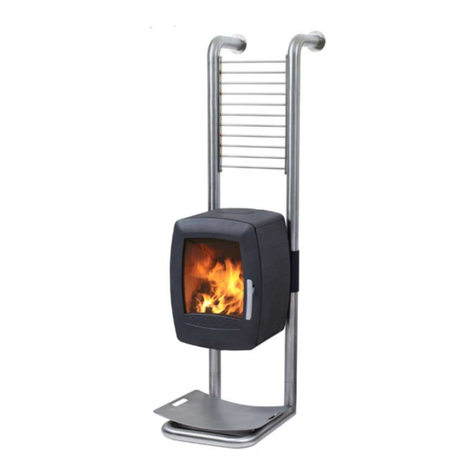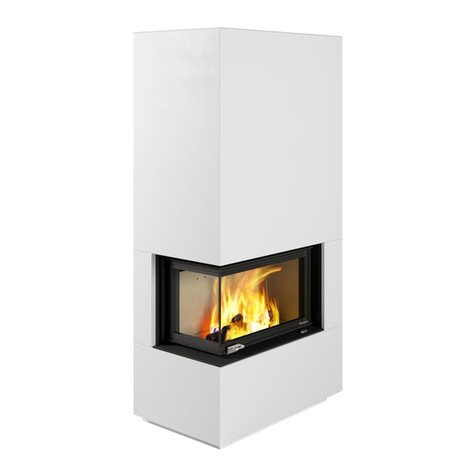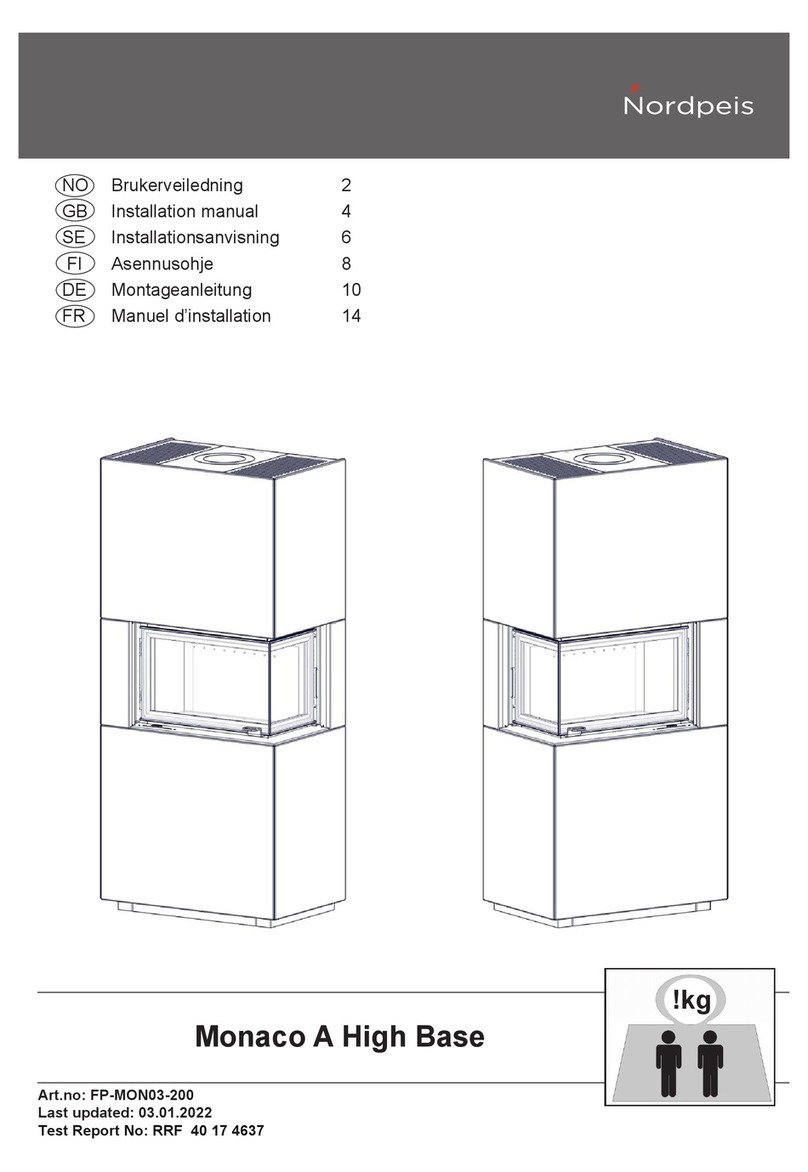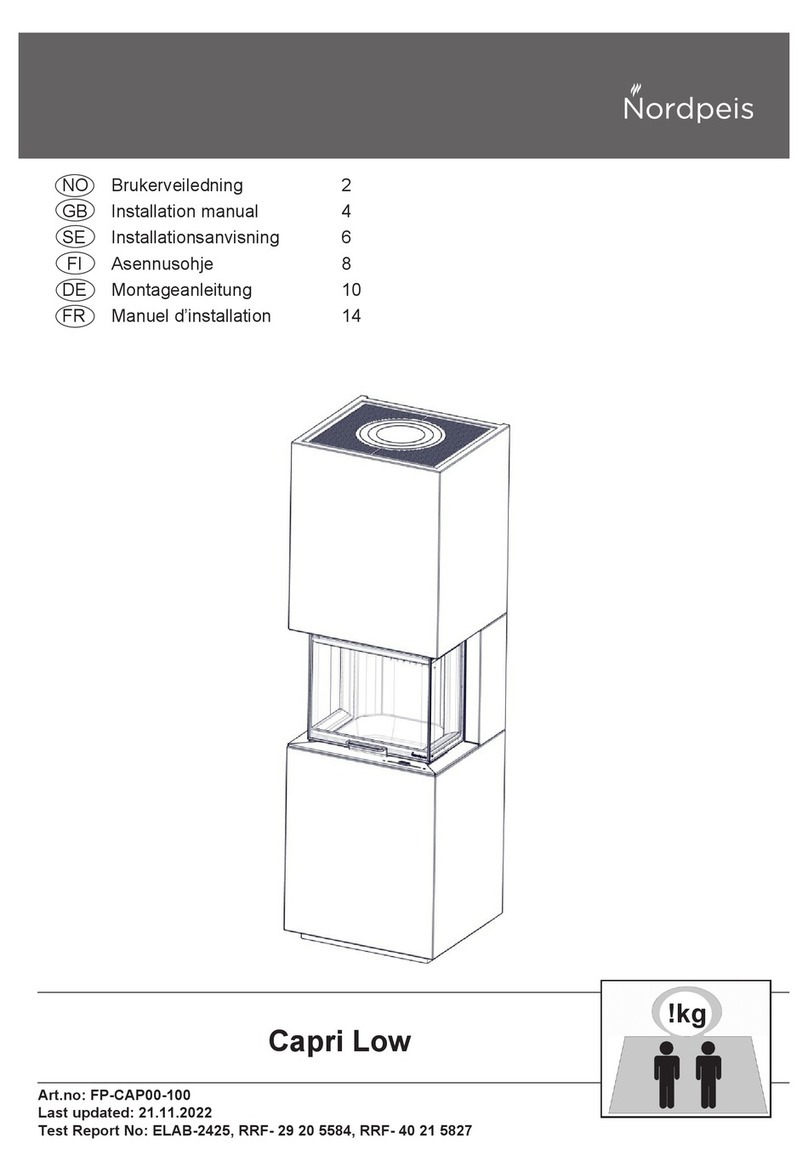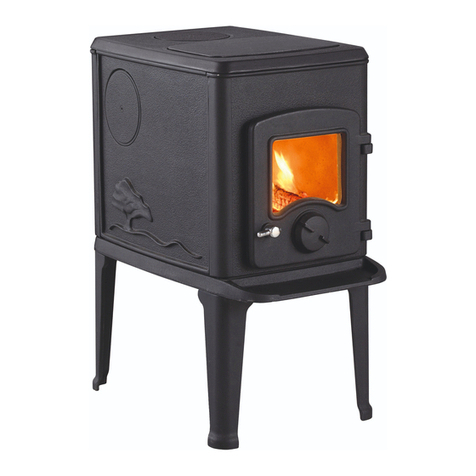
5
NO
Maling av omrammingen
Det anbefales å bruke peisen noen ganger for å
herde lakken før evt. maskering og maling. Bruk
kun vannbasert, diusjonsåpen maling og egnet
maskeringstape. Løsne tapen forsiktig for ikke å skade
lakken.
Ved innbygging
Ved egen innbygging av innsats må det sikres tilkomst
til innsatsens spjeldregulering og dørens motvekt/wire
gjennom f.eks inspeksjonsluker eller rister.
Sørg for at alle innbyggingskrav er overholdt iht
nasjonale regler.
Selv om ildstedet er koblet til friskluft skal inn- og
utluftekanaler være dimensjonert etter kravene
spesisert i FIG 1B.
5. Første opptenning
Når ildstedet er installert og alle forskrifter er overholdt,
kan det tennes opp.
Unngå kraftige støt når det legges ved inn i
brennkammeret da dette kan skade isolasjonsplatene.
Vær oppmerksom på at fukt i isolasjonsplatene kan gi
en treg forbrenning de første opptenningene. Dette vil
løse seg når fuktigheten fordamper. Fyr evt. med døren
på gløtt de 2-3 første gangene.
Sørg også for god utluftning ved første fyring, da
lakken på ildstedet vil avgi røyk og lukt. Røyken og
lukten er ikke helseskadelig og vil forsvinne.
! Innsatsen skal fyres med lukket dør
Se egen fyringsveiledning
Opptenning
Mengde opptenningsved
Finklyvd ved (diameter på 3-5cm)
Lengde: 25-30cm
Ca mengde per opptenning: 3 kg
Sett fyringventilen i opptenningsposisjon (FIG B).
Legg inn tørr småved, tenn opp og la ammene få
godt tak i veden. Når ammene er stabile og pipen
er blitt varm, skal fyringsventilen justeres ut av
opptenningsposisjon (A). I motsatt fall kan ildstedet og
pipen bli overopphetet.
Når det er dannet et glødende kullag og ammene har
dødd ut, kan ny ved legges inn. Dra glørne frem når du
legger inn ny ved, slik at den nye veden antennes forfra.
Døren skal lukkes etter hver gang det legges i ny ved.
Bålet skal brenne med friske livlige ammer.
VIKTIG:
La aldri luftreguleringen stå i opptenningsposison
over lengre tid da dette kan føre til overoppheting.
Påfyllingsved/ileggsved
Kløyvd ved (diameter 6-9cm)
Lengde: 25-50cm
Normal ileggstr. 2,5 kg per time
(Max ilegg: 3 kg per time)
Svært lav forbrenningseekt og forsøk på fyring døgnet
rundt er uheldig da dette gir økt forurensning og økt
fare for skorsteinsbrann. Fyr aldri slik at ildsted eller
rør blir rødglødende. Steng fyringsventilen hvis dette
skjer. Optimal regulering av fyringsventilen krever litt
erfaring. Når du har fyrt i ildstedet en stund, vil du nne
en naturlig fyringsrytme.
NB ! Husk alltid å åpne fyringsventilen når
det legges ny ved i et varmt brennkammer. La
veden få ordentlig fyr før ventilinnstillingen
reduseres.
Ved lav trekk i skorsteinen og stengte ventiler
kan gassene fra veden bli antent med et smell
som kan forårsake skader på produktet og
omgivelsene.
6. Vedlikehold
Rengjøring og inspisering
Minst en gang i løpet av fyringssesongen bør ildstedet
inspiseres grundig og rengjøres (gjerne i forbindelse
med feiing av skorstein). Se til at alle sammenføyninger
er tette, og at pakninger ligger riktig. Pakninger som er
slitt eller deformert bør skiftes ut.
Husk at ildstedet alltid må være kaldt før det inspiseres.
Aske
Asken må fjernes med jevne mellomrom. Vær
oppmerksom på at asken kan inneholde glør selv ere
døgn etter at ilden har opphørt. Det anbefales imidlertid
å la det ligge igjen et lag aske i bunnen, da dette bidrar
til å isolere brennkammeret. Bruk en beholder av ikke
brennbart materiale når du fjerner asken.
Vær varsom med Thermotteplatene ved fjerning av
aske, spesielt ved bruk av askespade
Thermotte™
Isolasjonsplatene (Thermotte - FIG 7) er klassisert
som slitasjedeler som det er behov for å bytte
etter noen år. Slitasjen er direkte påvirket av bruken av
ildstedet. Nordpeis gir ett års garanti på deisse delene.
Utover denne garantiperioden kan delene kjøpes.
Dersom det er nødvendig å ta ut thermotteplatene, gjø-
res dette omvendt av rekkefølgen beskrevet
nedenfor.
A. Røykvenderplate
B. Røykvenderplate
C. Sideplate venstre
D. Sideplate høyre
